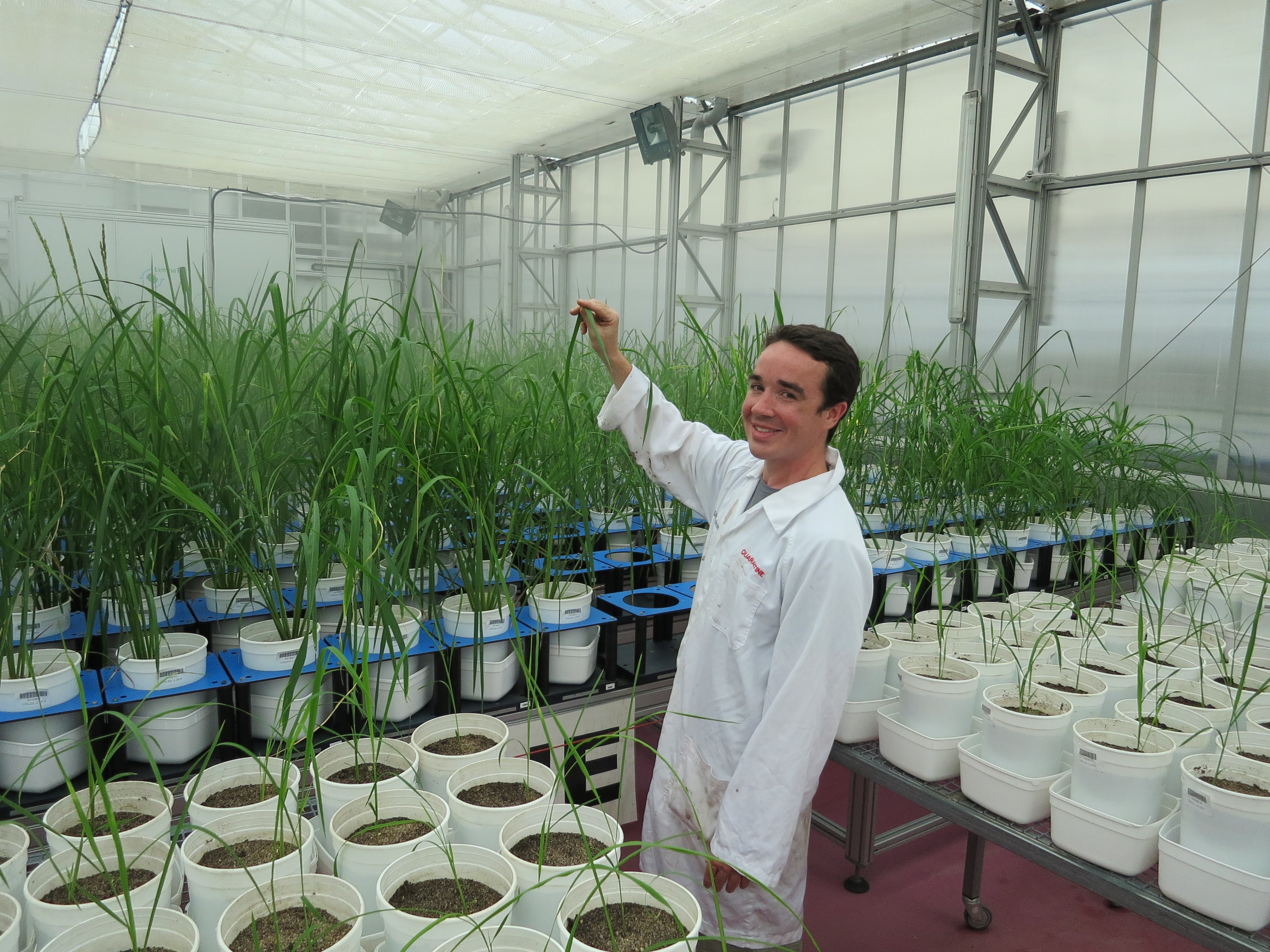By combining high-resolution image-based phenotyping with functional mapping and genome prediction, a new study has provided insights into the complex genetic architecture and molecular mechanisms underlying early shoot growth dynamics in rice.
The more rapidly leaves of a plant emerge and create canopy closure, the more successful the plant, in establishment, resource acquisition and ultimately yield. An early vigor trait is particularly important in aerobic rice environments, which are highly susceptible to water deficits. The timing of developmental ‘triggers’ or switches that initiate tiller formation and rapid exponential growth are a critical component of this trait, however, searching for the switch that initiates this growth has proven challenging due to the complex genetic basis and large genotype-by-environment effect, and the difficulty in accurately measuring shoot growth for large populations.
“The availability of large, automated phenotyping platforms, such as those at Australian Plant Phenomics Facility (APPF), allow plants to be non-destructively phenotyped throughout the lifecycle in a controlled environment, and provide high resolution temporal data that can be used to examine these important developmental switches,” said PhD student, Malachy Campbell.
Malachy and team, including Bettina Berger and Chris Brien from the APPF, phenotyped a panel of ~360 diverse rice accessions throughout the vegetative stage (11-44 day old plants) at The Plant Accelerator® at APPF. A mathematical equation was used to describe temporal growth trajectories of each accession. Regions of the genome that may regulate early vigor were inferred using genome-wide association (GWA) mapping. However, many loci with small effects on shoot growth trajectories were identified, indicating that many genes contribute to this trait. GWA, together with RNA sequencing identified a gibberellic acid (GA) catabolic gene, OsGA2ox7, which could be influencing GA levels to regulate vigor in the early tillering stage.

For some traits where genetic variation is controlled by a small number of loci, breeders can use MAS to identify individuals carrying the favourable locus/loci for the given trait, and select them for the next generation. For complex traits that are regulated by many loci, it becomes very difficult to detect loci that are associated with the trait. However, an alternative approach, genomic selection (GS), considers the total genetic contribution of all loci to the given trait. With this approach, loci across the genome can be used to predict the performance of individuals that have not yet been phenotyped (i.e. those in future generations). Since many loci were found to be contributing to early vigor, the team explored the possibility of using GS for improving this trait. Shoot growth trajectories could be predicted with reasonable accuracy, with greater accuracies being achieved when a higher number of markers were used. These results suggest that GS may be an effective strategy for improving shoot growth dynamics during the vegetative growth stage in rice. The approach of combining high-resolution image-based phenotyping, functional mapping and genome prediction could be widely applicable for complex traits across numerous crop species.
Read the full paper, published in The Plant Genome, here. (doi:10.3835/plantgenome2016.07.0064).






